Switzerland’s second city may look staid from the outside, but beneath the surface is a tantalising world of possibilities.
Geneva actively cultivates an image of mystery and secrecy. After all, this is where diplomats negotiate the future of the world behind closed doors and private bankers count fortunes in wood-panelled offices overlooking the lake. Opulent hotels line the lakefront and the world’s most skilled watchmakers come here to practice their intricate art. But despite the wealth, which is considerable, this is not a city given to obvious flash and bling. Since Calvin preached his brand of religious reform here in the 1530s and 1540s that is still an integral part of the city’s personality, its inhabitants have valued discretion over ostentation, blending into the crowd rather than standing out.
Locals pride themselves on efficiency and punctuality (don’t be late to dinner), but there is none of chaotic hustle and bustle of other international centres. From across Lake Geneva, their French neighbours taunt Genevans with the expression “It’s not as if the lake’s on fire,” spoken with a deliberate drawl that is supposed to imitate, and gently mock, the relaxed attitudes on this side of the water.
Don’t mistake a noncommittal response for an absence of vitality and initiative, though. Local author and cultural celebrity MetinArditi who is a Genevan by adoption calls the unhurried demeanour “a ruse” used by poker-faced Genevans who don’t want to reveal their hand. Behind the unassuming veneer, Geneva is abuzz with creativity and innovation. Chefs, designers, entrepreneurs and free-thinkers choose Geneva for the boundless opportunities the city offers.
Stuffy and cool, pragmatic and playful, dynamic and lackadaisical, cosmopolitan and parochial: Geneva is a bundle of contradictions. But it is because Geneva constantly defies expectations that visitors never know what surprises await them at every corner.
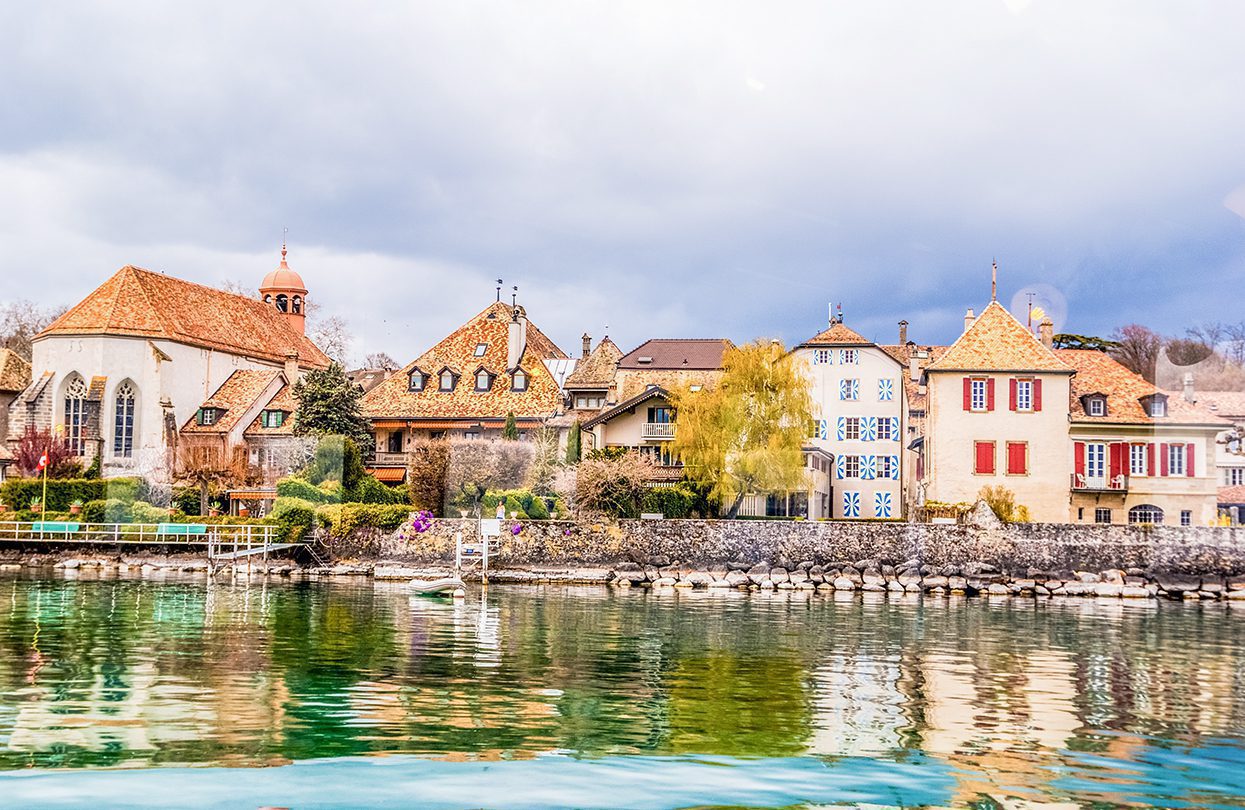
A rewarding cruise on Lake Geneva reveals pretty little buildings that beckon a traveller to explore, by Vincent Sung
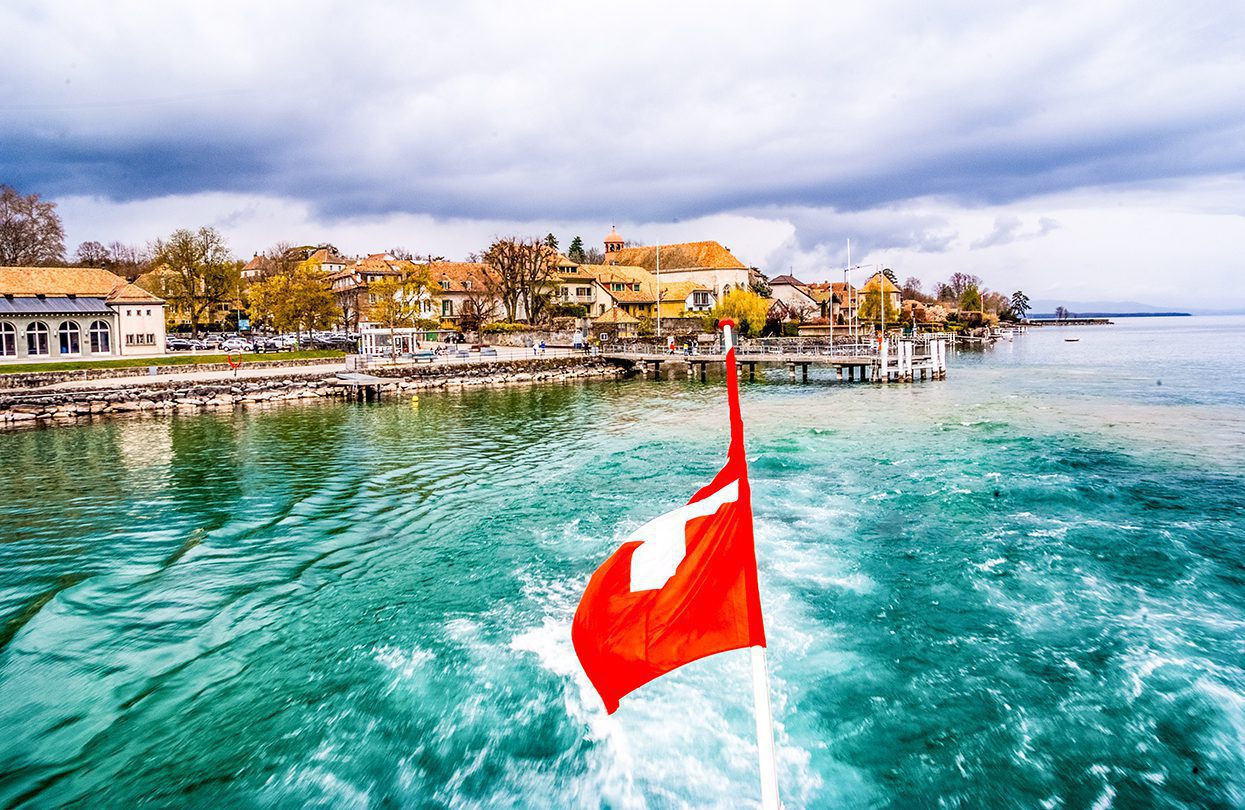
Paddle wheel boat cruises, a unique heritage, run by the CGN on Lake Genenva, by Vincent Sung
The Lay of the Land
The Jet d’eau or fountain on Lake Geneva that spews water 140 metres in the air embodies Geneva’s dichotomy. Designed as a functional valve to release pressure from a hydraulic power plant that supplied electricity to the growing city (originally released only on Sundays when businesses were closed and demand was lower), the authorities realised they were on to something and moved it to its current location in 1891 where it became one of the most recognisable symbols of the city and its most photographed attraction. Get a close look at it from one of the paddle steamboat cruises run by the CGN and stay on the boat to tour the stately homes and villages around the lake. You can walk up to it too from the Eaux-Vives side, but be aware that even a slight change in wind can drench the watching crowd.
After seeing the city from the water, you can choose another original form of transportation that reflects Genevans’ love for their environment. Covered Taxi-Bikes will take up to two people around the centre, zipping along bike lanes using manpower and eco-friendly electric motors.
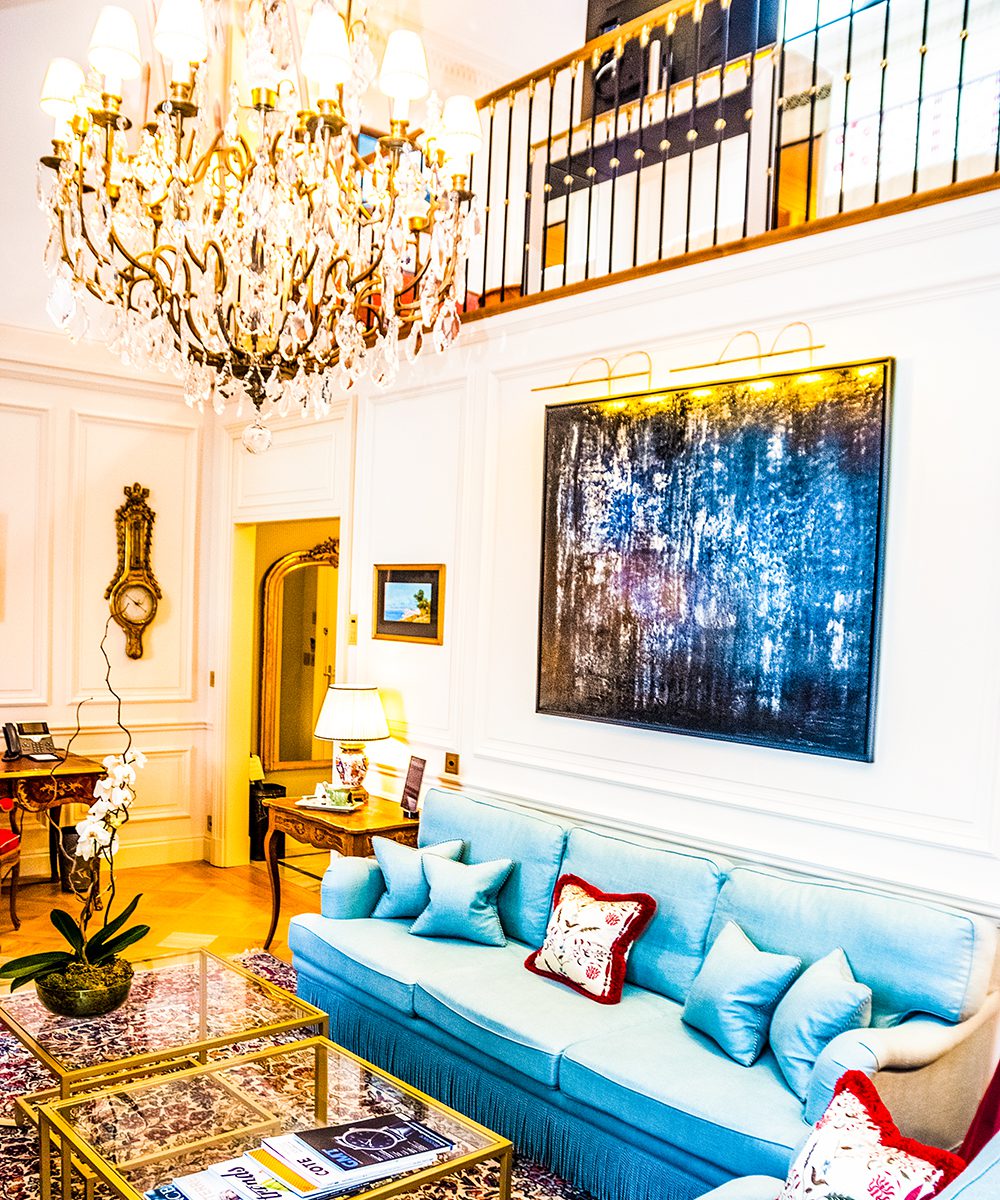
Beau-Rivage Geneva’s Duplex Elizabeth Taylor Suite, by Vincent Sung
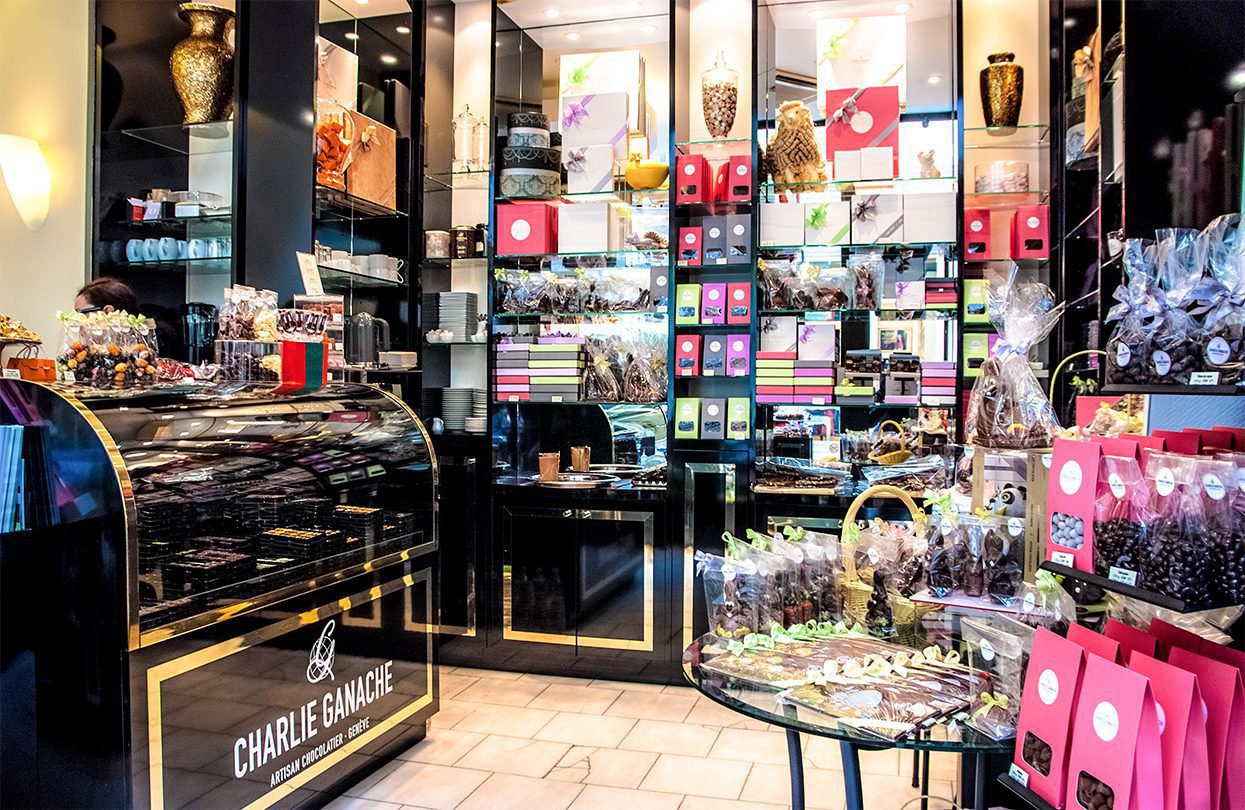
Charlie Ganache artisan chocolatier, by Vincent Sung
Feeling Artsy
If you want to take in some art, you could ask your driver to head for the Quartier des Bains, where you’ll find galleries like Le commun, a city-sponsored space for young artists to show their work. If you’re looking for something a little edgier, try L’Usine, a converted factory that houses studios, a nightclub and even a razor-sharp hair salon. Other converted industrial spaces used for exhibitions are located on the islands on the Rhône that feeds into Lake Geneva including Halle Nord in a former market, and Quartier Libre, once a pumping station and power plant.
If you want to take home a unique souvenir, browse through the prints and posters at Galerie 123 (un, deux, trois). Jean-Daniel Clerc has been collecting rare advertisements for decades, including Swiss products, tourist destinations and even public service announcements. Every piece has a story that the owner will only be too glad to share.
Opera fans should take in a performance at the newly reopened Grand Théâtre de Genève, that has returned the lobby and foyer space to their past splendour and adds state-of-the-art technology backstage and behind the scenes. The 24-metre bar used for interval drinks is the city’s longest.
After taking in art, culture and history, make a stop at cosy, homey Le Verre à Monique, for some of the best cocktails in les Bains. Book a table or run the risk of missing out on their Electric Yuzu (gin, yuzu, ginger, fruit and tingling bitters).
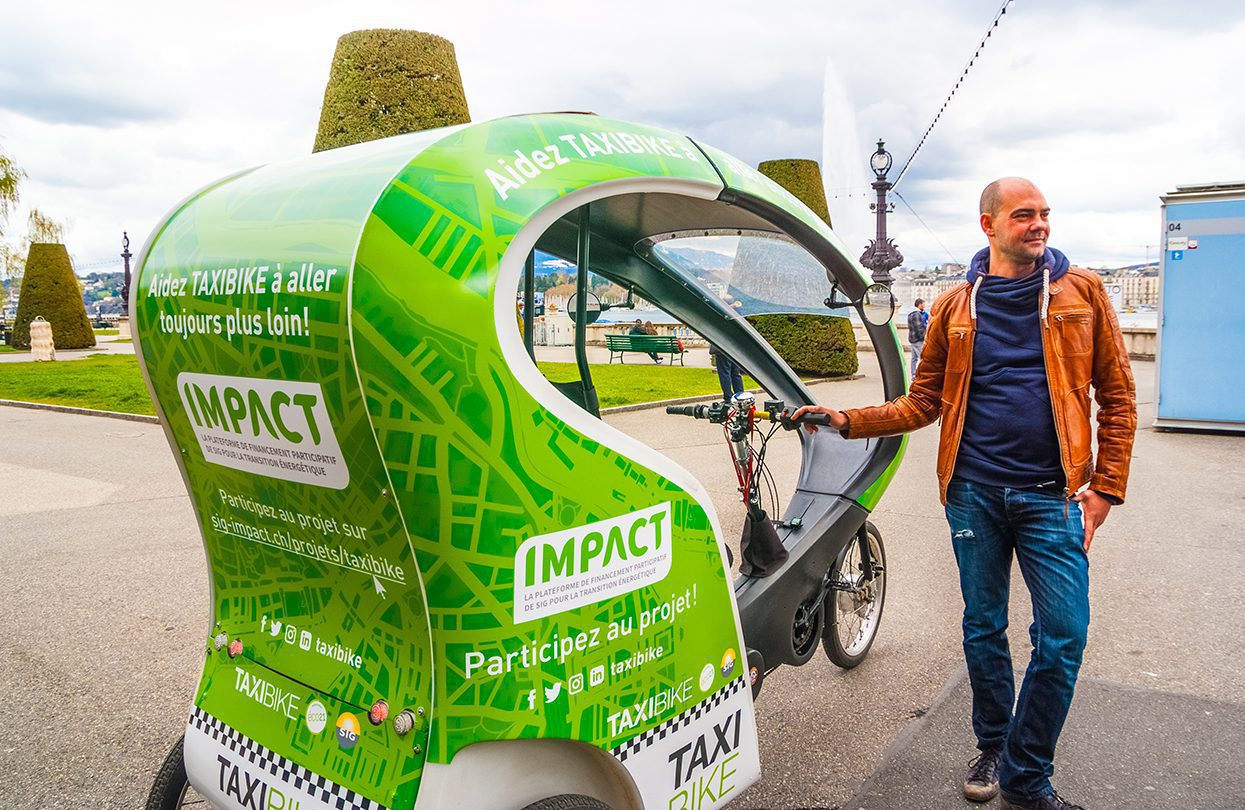
Covered taxi-bikes will take up to two people around the city centre
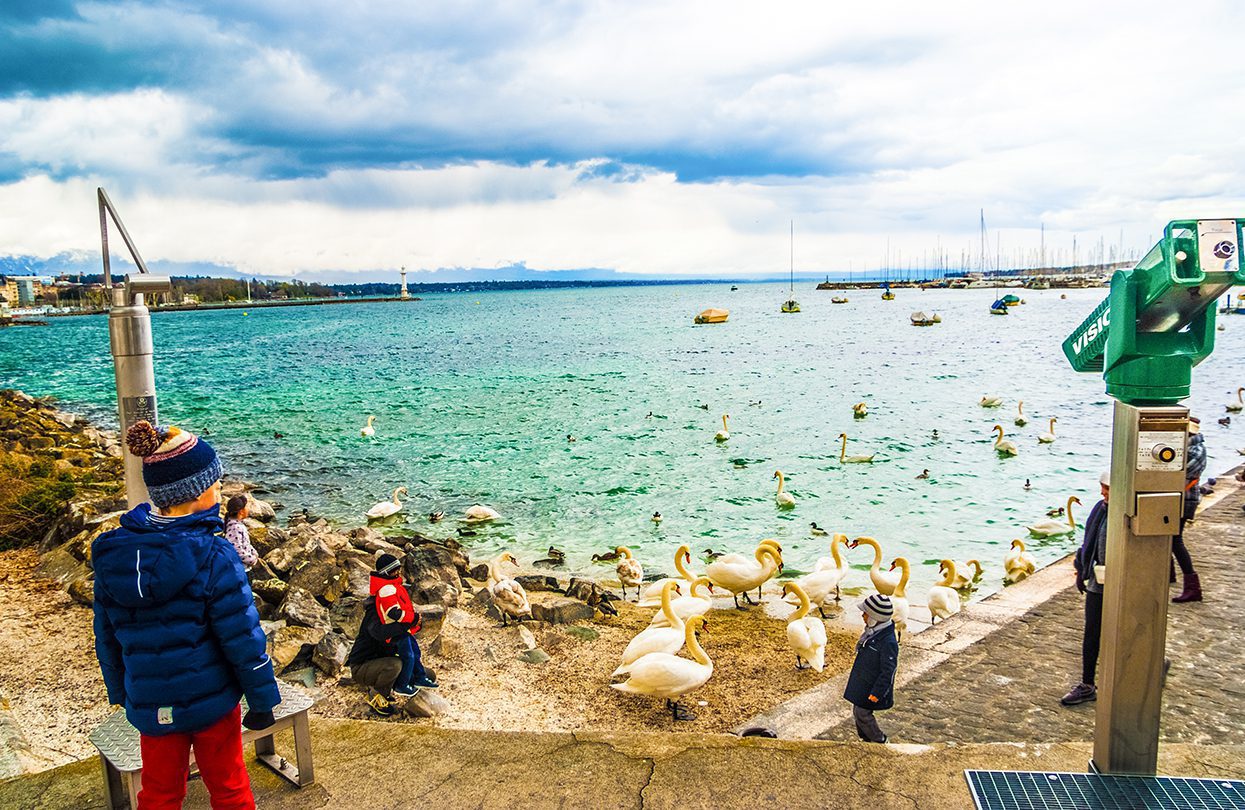
Spend a fun afternoon with panoramic view of the lake and its feathered inhabitants – the swan
Watching Out
The Old Town of Geneva, called la Vieille Ville or la Cité, was a walled fortress until the 19th-century. The medieval façades and cobblestone streets that lead to the venerable Cathedral of Saint-Pierre were also home to the first French watchmakers who brought their art to Geneva in the 1500s. Today the neighbourhood is also home to the resolutely contemporary artisan Akrivia, an independent atelier founded by RexhepRexhepi in 2012. Seven craftsmen produce fewer than 30 exquisite, sought-after watches a year. Visits to the workshop are by appointment only.
A few doors down, another young company offers a one-of-a-kind experience in the city of luxury timepieces. At Initium, you can learn the fundamentals of watchmaking with a master horloger and then pick every element of the watch including the hands, case, band and of course the movement that you assemble yourself. The result: the satisfaction of having built a watch that is genuinely your own. “We appeal to a wide range of people,” says manager Jean-Christophe Benz. “There are people who save up to join one of our workshops, and there are customers who already have a collection of branded watches but want to learn more about how they work.”
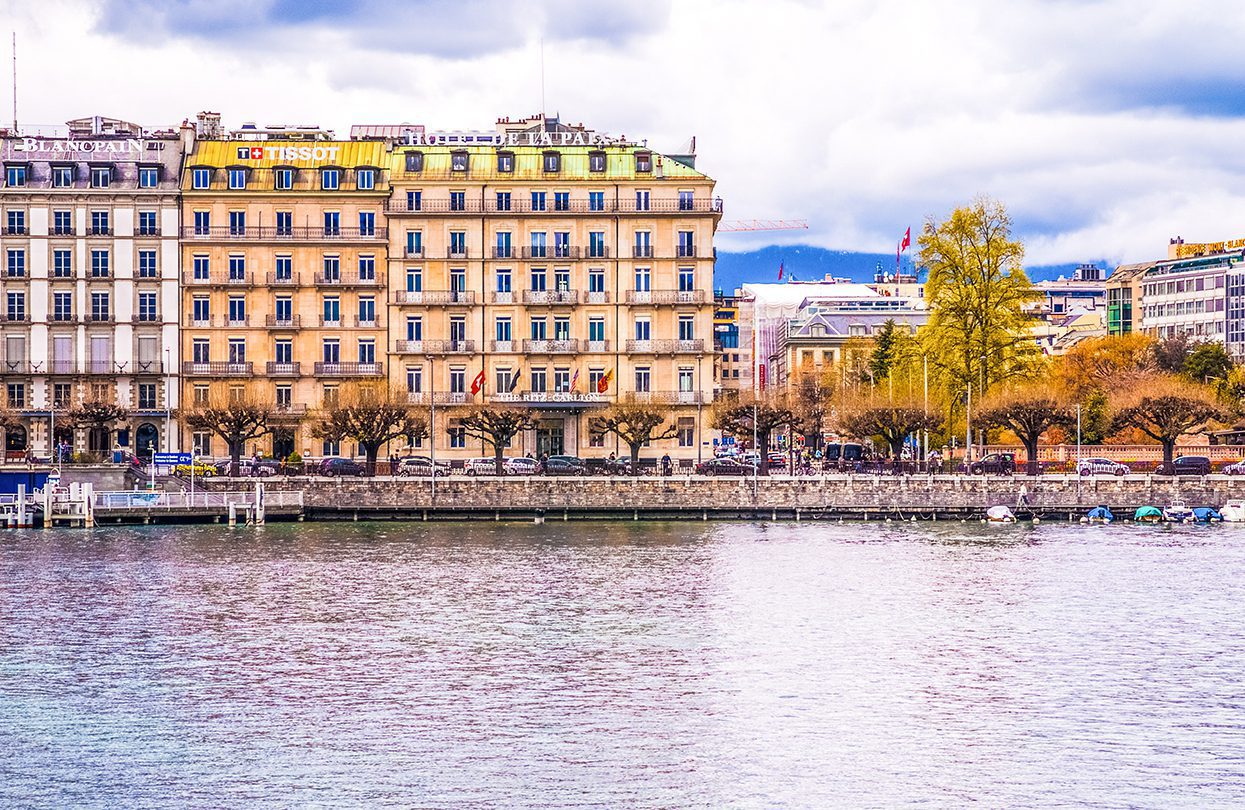
The Ritz-Carlton Hotel de la Paix – great location, amazing views and over 150 years of history
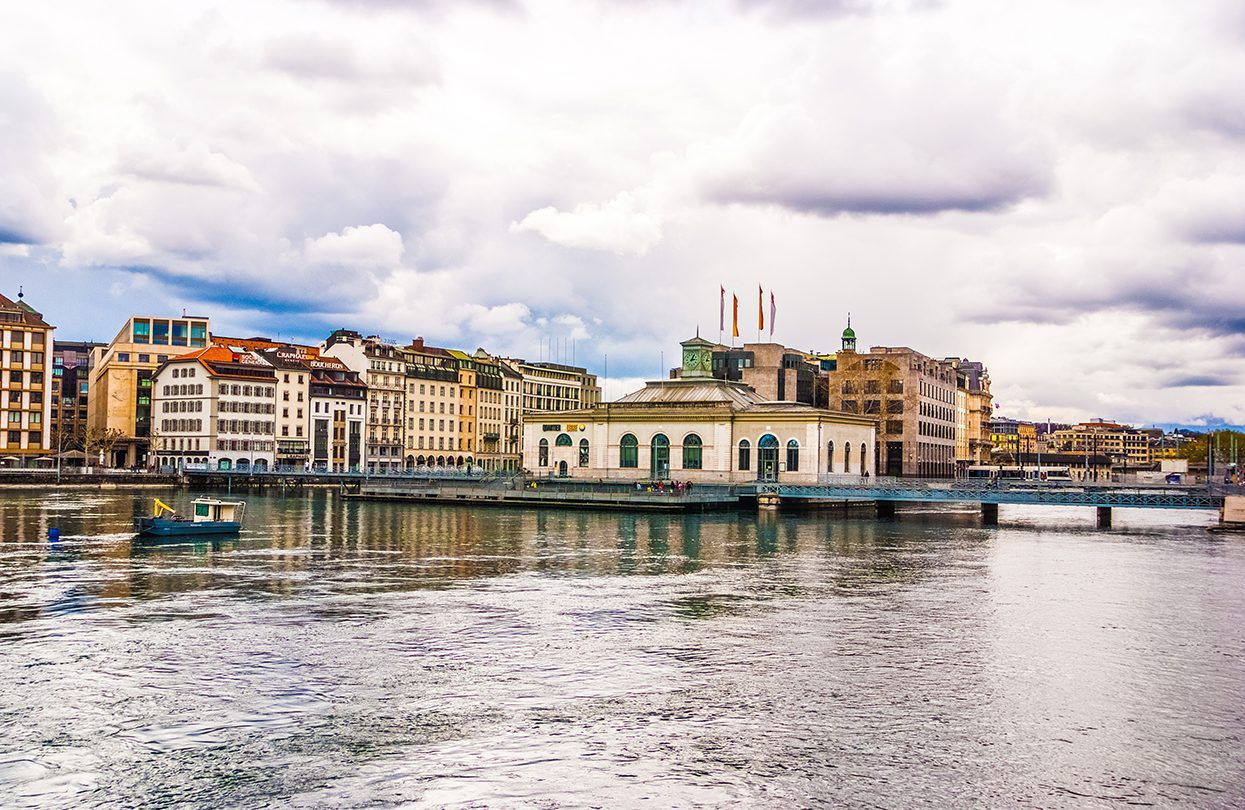
Quartier Libre, once a pumping station and power plant
Consuming Passion
Another apparent contradiction: austere Genevans also have a huge sweet tooth. The Swiss eat more chocolate than anyone else in the world, an average of 10.5 kilos per person each year. Everyone will have a favourite chocolate shop. Some will send you to Philippe Pascoët whose distinctive orange boxes are found around town (and now in Dubai as well). Others may pick newcomer Charlie Ganache, the brainchild of Pierre-Olivier Brändli, who plays with flavours like saffron and yuzu. “The idea is for you to travel with the chocolate,” he says.
Even the old-time chocolate houses are repackaging in new, inventive ways. La Bonbonnière will celebrate its 100th anniversary in 2021, but after chocolatiers Cédric Rahm and Yvan Loubet led an employee buyout last year, they opened Geneva’s first chocolate bar, serving a menu of 35 chocolate drinks that highlights distinctive origins like the Grand Cru Java 64%, a cacao connoisseur’s dream come true, along with their traditional products.
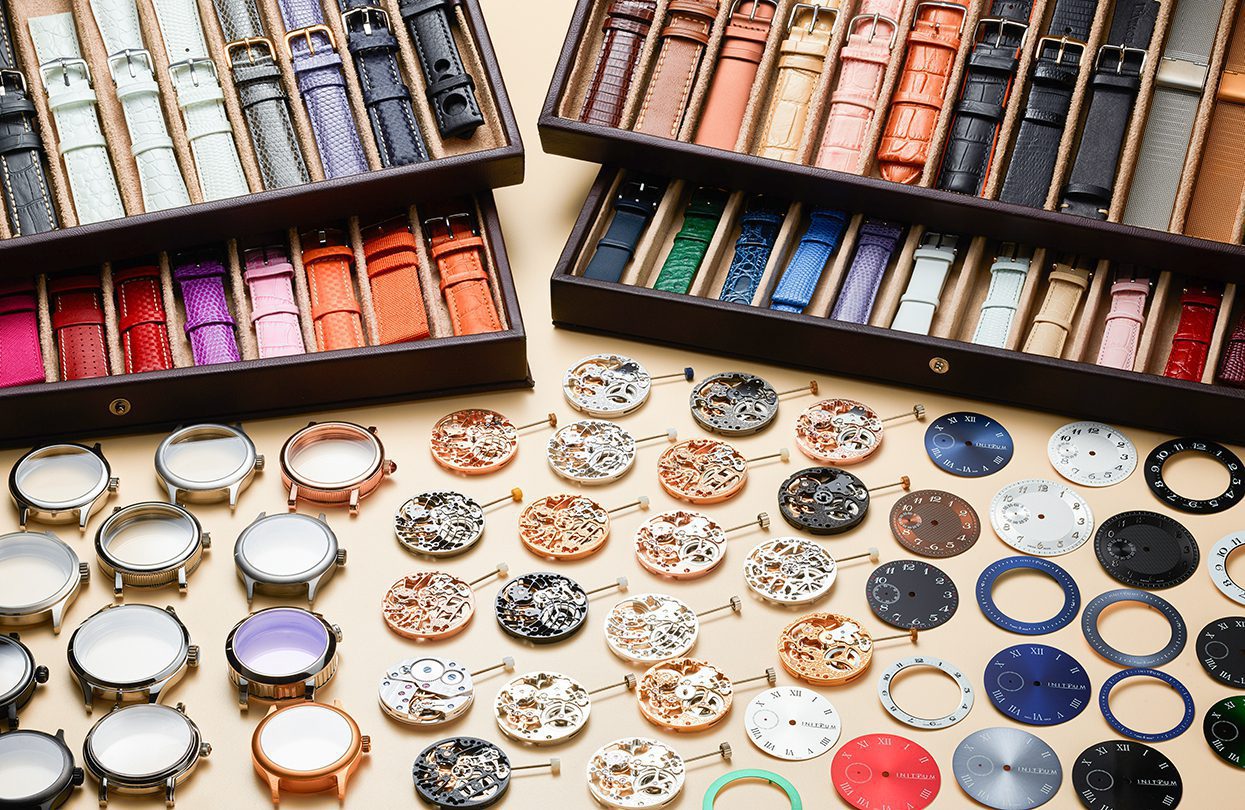
At Initium, pick every element of the watch including the hands, case and band

La Bonbonnière – Geneva’s first chocolate bar, serving a menu of 35 chocolate drinks along with their traditional products and creative chocolate designs
Gourmet shopping
Of course there is more to Swiss gastronomy that just chocolate. Meet the merchants in the Halle de Rive market like Dominique and Carol Ryser, behind the counter of Fromagerie Bruand, where you can get Swiss cheeses like the VacherinFribourgeois or a mix of cheeses for a fondue vacuum-packed for travel. On the weekend you might be lucky enough to try the latest finds from their friend Nathalie Kotarski of Epicuriels who crisscrosses the region meeting and promoting small winemakers. Top of her list: women winemakers and natural wines.
The food hall in the basement of the Globus department store, still referred to as Le Grand Passage originally opened in 1907, is another unmissable stop for gourmet shoppers. A personal shopper can guide you through charcuterie and other specialities and organise a tasting on site. Precious few Swiss wines are exported, perhaps because the Swiss keep them for themselves! Local hybrid varietals like Gamaret produce quirky reds, but the best-kept secrets are the distinctive Pinot noirs that will get Burgundy drinkers talking, and as will Chasselas, king of the whites. Looking for something a little stronger? Try Switzerland’s Appenzeller Single Malt whisky, aged in beer barrels.
For an exclusive oenological experience, head to the cellars of the Beau-Rivage, the luxury hotel opened by the Mayer family in 1865. There by special arrangement private cellar tours for very small groups can held, reaching as far back as the hotel’s history and your budget will allow.
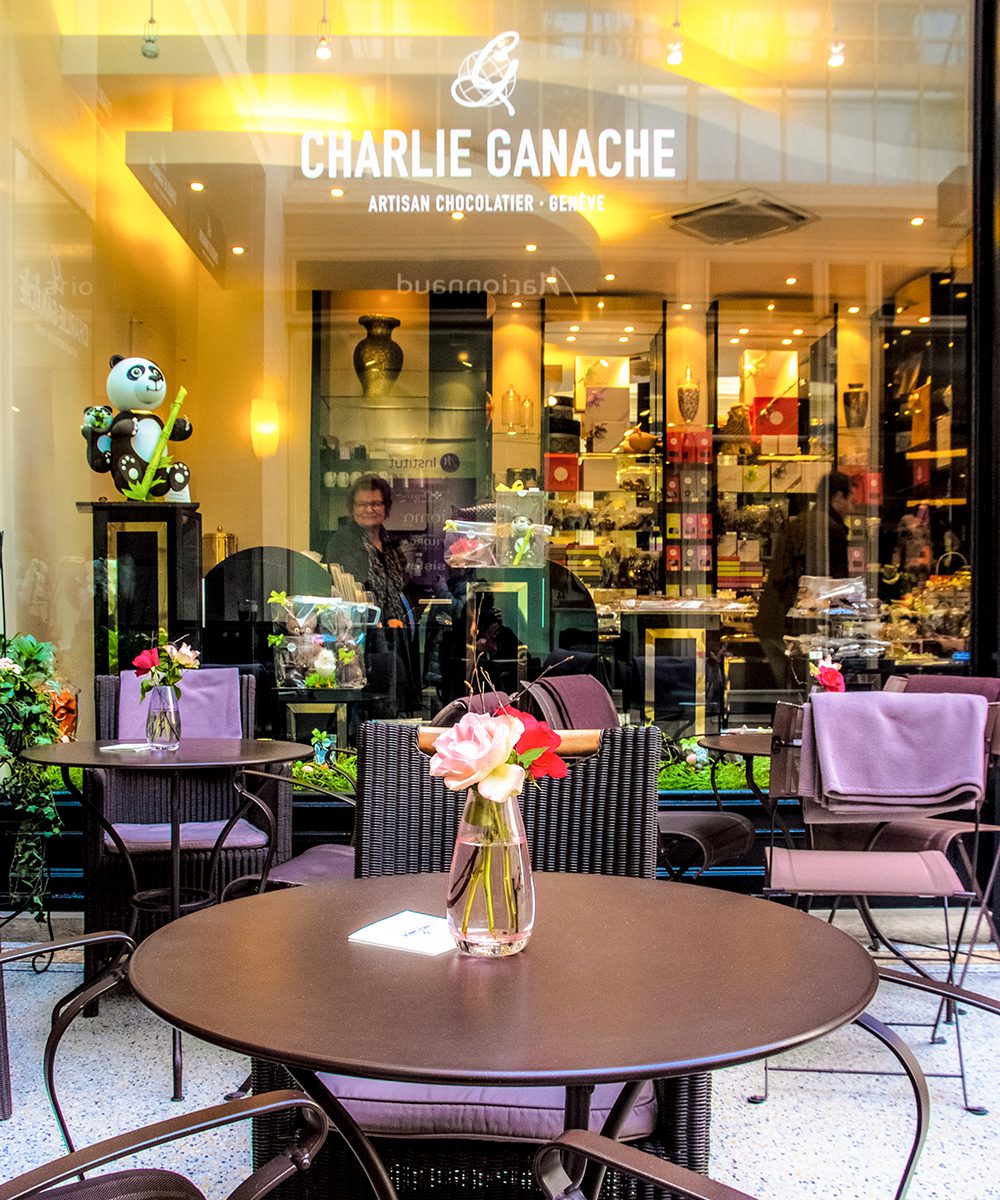
Newcomer Charlie Ganache, artisan chocolatier in Geneva
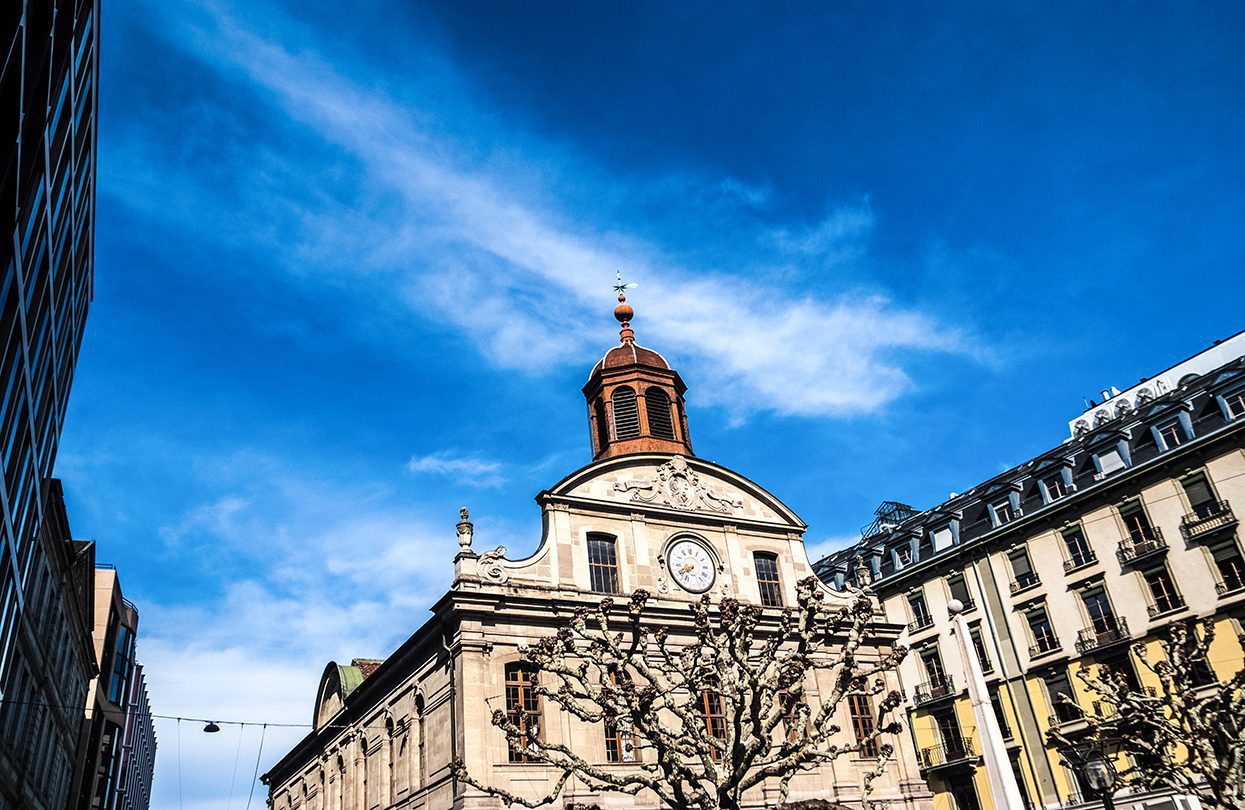
Brilliant blue skies make for excellent walks along Geneva’s historic buildings
Eating Geneva
More prosaically, you can enjoy the wines at Le Chat Botté, Chef Dominique Gauthier’s one-Michelin star gastronomic restaurant that serves a regularly changing tasting menu of modern French cuisine in what was once the hotel’s rôtisserie that served meats spit-roasted over an open fire.
For Nordic-inspired treat, head to Fiskebar in the Ritz-Carlton Hôtel de la Paix, where 25-year old Chef Benjamin Breton cures, ferments and serves wild foraged ingredients from his open kitchen, like the succulent steamed clams with forest greens showered in cured egg yolks.
Yet another destination restaurant is Izumi, located at the top of Four Seasons Hôtel des Bergues Geneva. Chef Mitsuru Tsukada is a master of Nikkei cuisine, Japanese dishes that immigrated to Peru in the early 20th-century. His seared black cod miso zuke is a masterclass on a plate.
Chef Philippe Chevrier is an institution in Geneva with several fine restaurants to his name. But carnivores will head straight for Chez Philippe that prides itself on sourcing the best meats, whether it’s the juiciest veal chop from star butcher Molard, or melt-in-your-mouth wagyu from Japan.
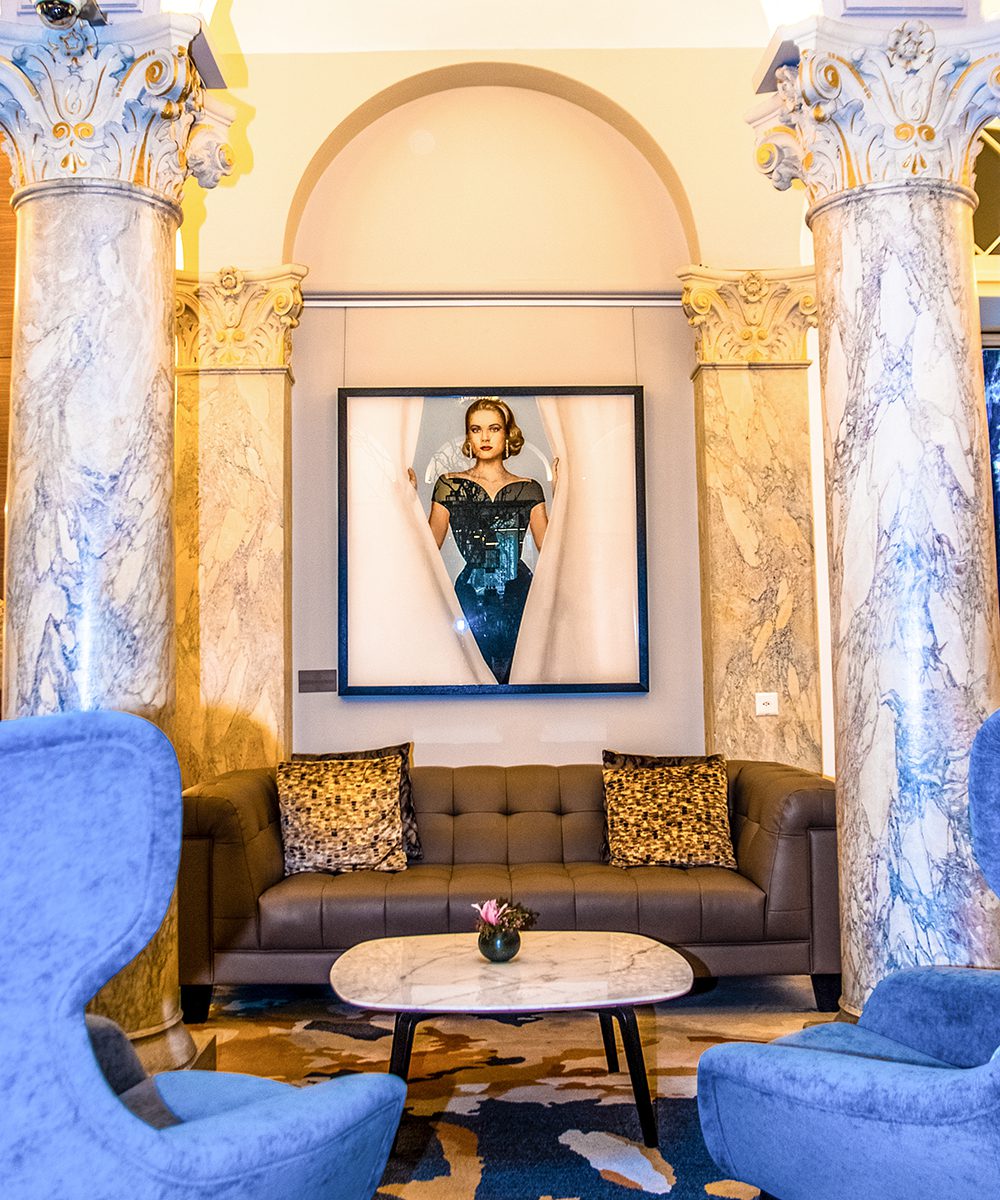
The Ritz-Carlton Hotel de la Paix’s design concept is created around art, time and nature offering sophisticated art deco design and gold leaf gilding
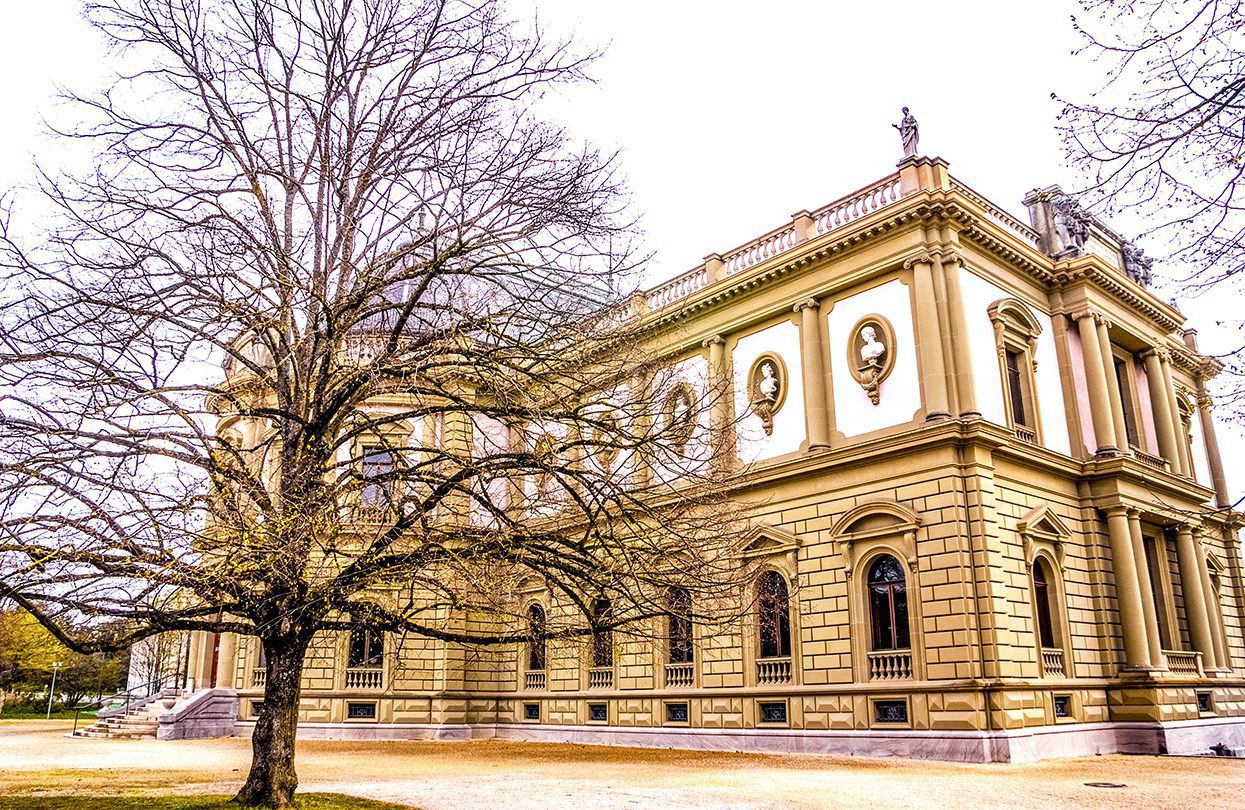
The Ariana Museum, collections of porcelain and glass
Sightseeing Suggestion 1: Go International
The Quartier International houses the United Nations Office, the second largest in the world after the headquarters in New York. The area is also home to the International Red Cross and Red Crescent Museum. The stunning Ariana Museum that houses a vast collection of porcelain and glass and its park was left to the city by 19th-century intellectual and politician Gustave Revilliod. The City in turn granted a large part of the park to the United Nations. The 12-metre high Broken Chair on Place des Nations by Swiss sculptor Daniel Berset was commissioned by Handicap International to raise awareness on the issue of landmines around the world.
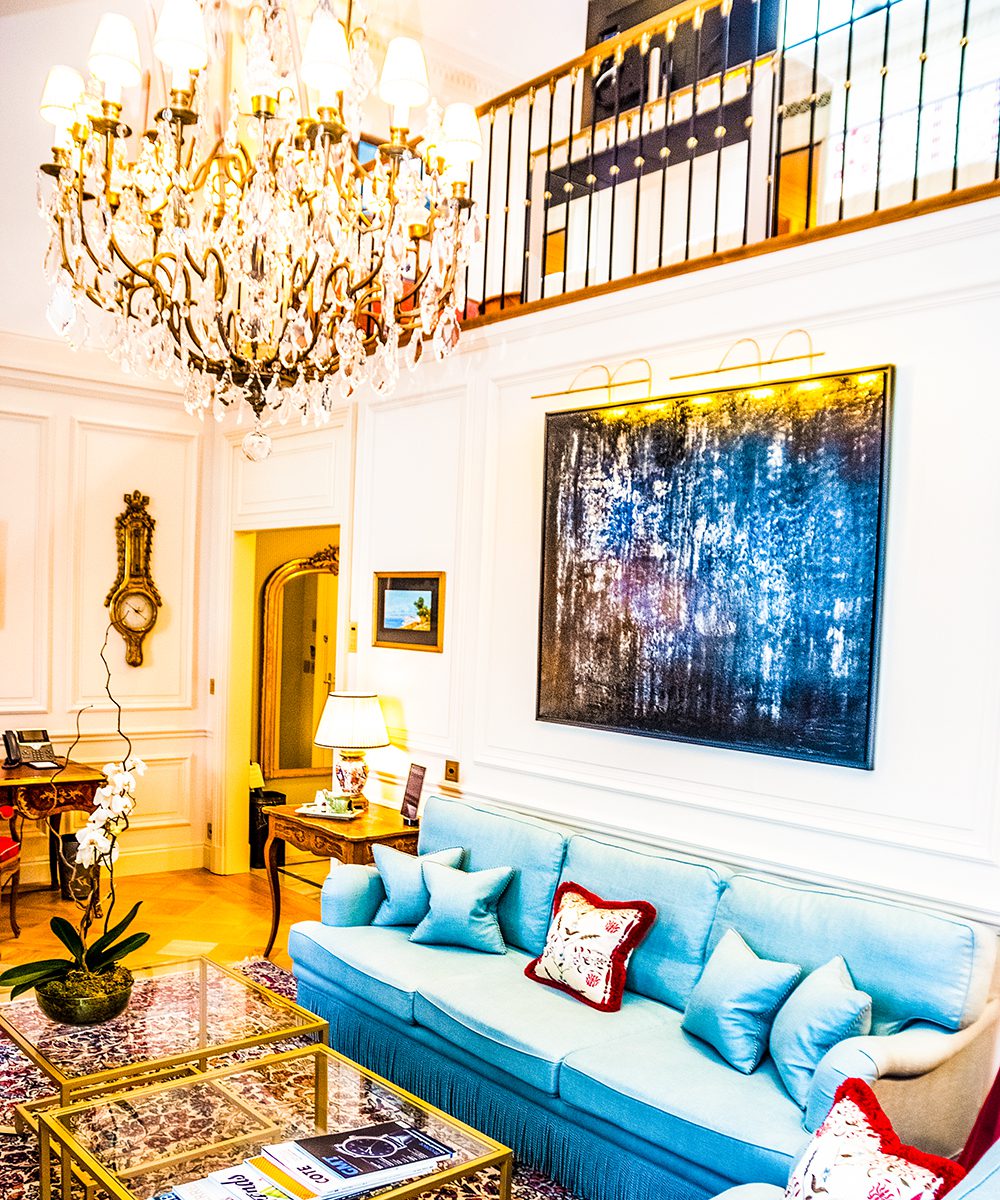
Beau-Rivage Geneva’s Duplex Elizabeth Taylor Suite
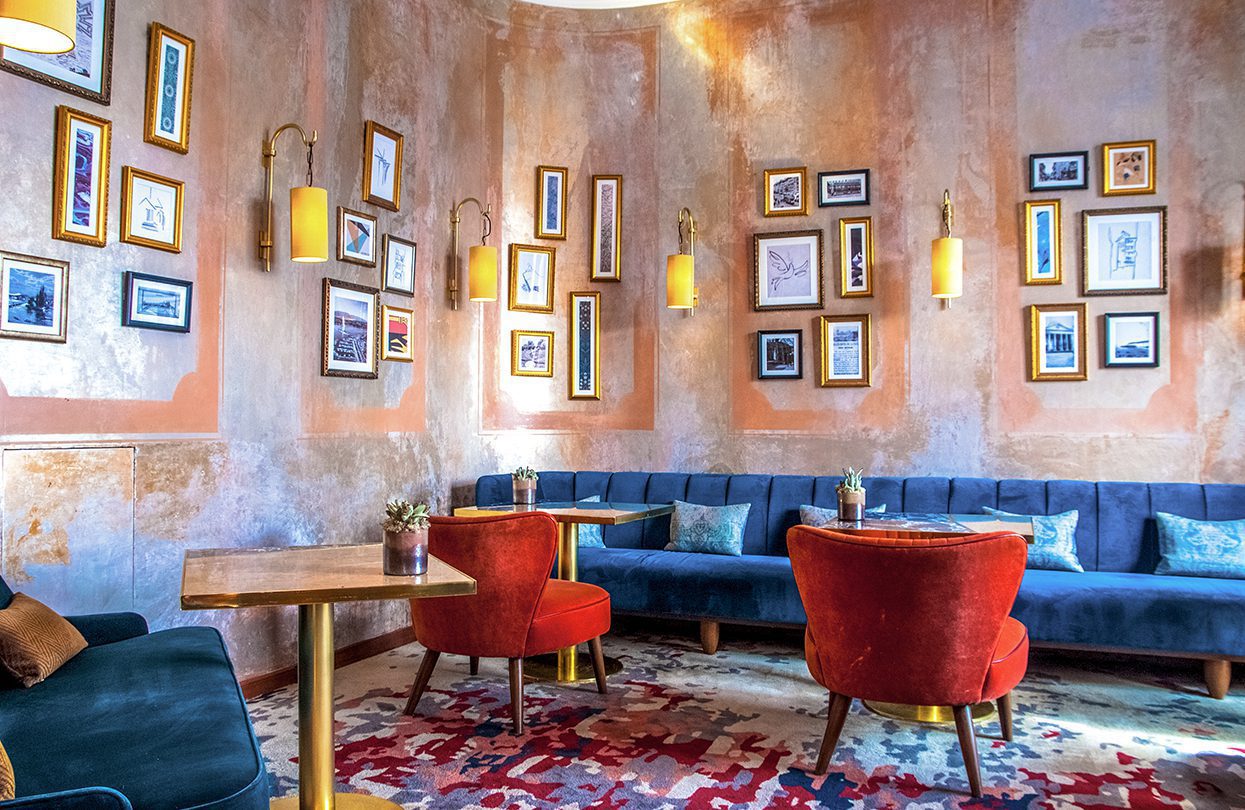
FiskeBar’s interiors are an extension of the Ritz-Carlton’s art, timelessness and gold-edged elegance
Sightseeing Suggestion 2: Get Out of Town (without really leaving town)
Next to proper Geneva, Carouge comes across like a rowdy cousin, loud, bright and just a little uncouth, but in an utterly charming way. By a treaty signed in 1754, the municipality became part of the Kingdom of Sardinia, settling a long-standing conflict between Geneva and the House of Savoy. It quickly gained a reputation for religious tolerance, as well as smuggling, nightlife and pleasures that were harder to come by in Protestant Geneva. That independence of spirit lives on today, in the neighbourhood’s art house Cinéma Bio, saved by local residents; the casual wine bar Le Vert Bouteille; live music every night at Le Chat Noir; new restaurants like Le Flacon; and loads of charming boutiques. As you wander around the brightly-coloured streets you may catch a glimpse of the lush gardens and courtyards through an open gate. Carouge became part of the Canton of Geneva in 1816.
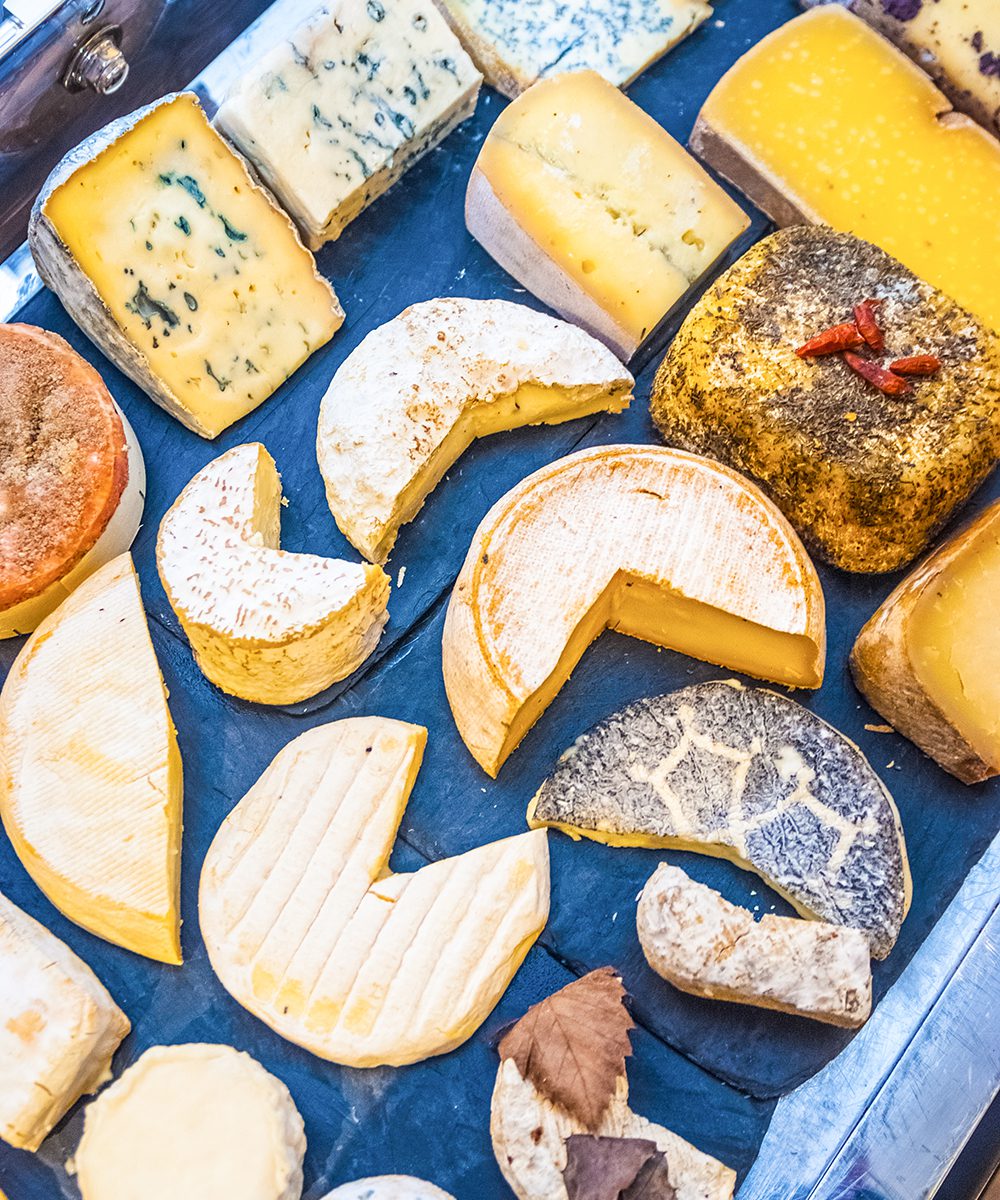
It’s platters of cheeses at Le Chat Bottle Beau Rivage

At Le Chat Bottle Beau Rivage for dessert, one gets ready to slice into the soufflé
Where to Stay
The Ritz-Carlton, that locals still call Hôtel de la Paix, opened on the lake in 1865, just a stone’s throw from what was then the new railway station of Cornavin, still in use today. The hotel recently underwent a major renovation that preserves its huge atrium lobby while adding modern touches. See the spirals on the chandelier and on the in-room fixtures? They are reminiscent of the movement of a fine watch. 74 rooms and suites have also been thoroughly revamped with clean modern lines and every comfort a guest could wish for. Waking up to a lake view is something you’ll never tire of. The Living Room offers all-day dining and Fiskebar is both an excellent cocktail bar and an innovative gastronomic restaurant with Nordic flair. ◼
Subscribe to the latest edition now by clicking here.
© This article was first published in June-July 2019 edition of World Travel Magazine.

